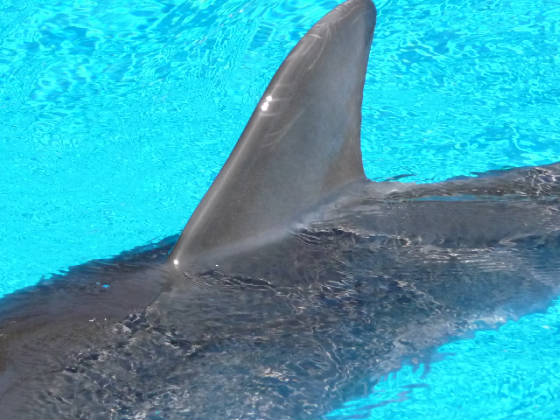
In this week’s episode, we will review breaking Dolphin News from around the world, focus our Science Spotlight on dolphin sleep, and in our Kids’ Science Quickie, we’ll discuss how you can tell how old a dolphin is by looking at its teeth.
|
Dolphins sleep behavior is fundamentally different to that of humans
|
In this week’s science spotlight, we will be discussing sleep in dolphins and humans. For this episode, I interview Dr. Brendan Lucey. A graduate of Johns Hopkins School of Medicine, Dr. Lucey is currently a clinical neurophysiology fellow at Brigham and Women’s hospital at Harvard Medical School, and has a keen interest in sleep and sleep disorders. He was kind enough to join us today so we could discuss how sleep works in dolphins, and how it compares to sleep in humans.
|
New hearing pathway discovered, US Navy must abide by injunction, drunken men harass dolphin
[ms_audio style=”light” mp3=”https://www.dolphincommunicationproject.org/wp-content/uploads/2022/05/thedolphinpod7dolphinpodnews.mp3″ ogg=”” wav=”” mute=”” loop=”” controls=”yes” class=”dcp-embed-mp3″ id=””]
Scientists discover a new pathway for hearing in beaked whales
A group of scientist published an article in the journal BIOINSPIRATION & BIOMIMETICS earlier this month describing a newly discovered sound reception channel in the skull of Cuvier’s beaked whale. Using advanced computer modeling systems, the researchers discovered an area between the lower jaw bones, in the throat area, that appears to receive sound vibrations and direct them to the inner ear via a fatty channel. Traditionally, toothed whales are thought to receive sound vibrations through fatty channels in their lower jaw, but this new sound transmission channel – termed the gular pathway – may in fact be a more efficient means of receiving sound, and may perhaps even be the primary path of sound reception. The authors discuss the possibility that the gular pathway might be important to species other than Cuvier’s beaked whale, including bottlenose dolphins.
********************
Judge orders US Navy to comply with no-sonar law
A federal judge has ruled that President Bush’s exemption of the US Navy to the National Environmental Policy Act, which limits sonar use off the coast of California, has no legal standing, and that the Navy must comply with the court ordered injunction. The injunction creates a 12 mile no-sonar zone off the cost of Southern California in an effort to protect endangered marine species from potentially deadly Navy sonar.
********************
Two drunken Englishmen charged with interfering with a dolphin
After returning from a trip to the pub, two intoxicated Englishmen bypassed signs asking people not to harass Dave the dolphin, a friendly dolphin living off the coast of Kent in England, and attempted to swim with Dave. The incident occurred in the wee hours of the morning back in June of 2007. According to the defendants, swimming with Dave was “cheaper than an exotic swimming with the dolphins holiday”. The men attempted to ride Dave, pulled on her dorsal fin and, according to local dolphin experts, ignored signs that the dolphin was displaying aggressive behaviors towards them. Local authorities were called in after witnesses reported the incident, and the men were promptly arrested. The landmark case is currently underway in England, and is the first time that anyone has been charged with the crime of ‘interfering with a dolphin’. Dave has not been seen since December 2007, and is presumed dead.
************************
In this week’s science spotlight, we will be discussing sleep in dolphins and humans.
Listen to the interview:
[ms_audio style=”light” mp3=”https://www.dolphincommunicationproject.org/wp-content/uploads/2022/05/thedolphinpod7sciencespotlight.mp3″ ogg=”” wav=”” mute=”” loop=”” controls=”yes” class=”dcp-embed-mp3″ id=””]
For this episode, I interview Dr. Brendan Lucey. A graduate of Johns Hopkins School of Medicine, Dr. Lucey is currently a clinical neurophysiology fellow at Brigham and Women’s hospital at Harvard Medical School, and has a keen interest in sleep and sleep disorders. He was kind enough to join us today so we could discuss how sleep works in dolphins, and how it compares to sleep in humans.

More information and links:
National Sleep Foundation website
American Academy of Sleep Medicine website
************************

How can you tell how old a dolphin is?
Kids’ Science Quickie:
[ms_audio style=”light” mp3=”https://www.dolphincommunicationproject.org/wp-content/uploads/2022/05/thedolphinpod7kidsciencequickie.mp3″ ogg=”” wav=”” mute=”” loop=”” controls=”yes” class=”dcp-embed-mp3″ id=””]
How can you tell how old a dolphin is? Believe it or not, the easiest way to tell a dolphin’s age is to look at its teeth. Bottlenose dolphins are born with around 25 teeth. Unlike humans, who lose their baby teeth, a dolphin will keep the full set of teeth it was born with for its entire life. And also unlike human teeth, dolphin teeth grow larger by producing growth layers in the root. These layers are visible and distinct for each year of a dolphin’s life. Scientists are then able to determine how old a dolphin is by cutting the tooth in half and simply counting the growth layers that they see, much like you can count the rings inside a tree trunk. Officially, these layers are called dentinal growth layer groups, and are a very reliable way to tell the age of most dolphin species.

Dolphin tooth section showing growth layers
*image from Quekett Microscopical Club website
************************
![]()
How many bones are in a dolphin’s dorsal fin?
[ms_audio style=”light” mp3=”https://www.dolphincommunicationproject.org/wp-content/uploads/2022/05/thedolphinpod7dolphinquiz.mp3″ ogg=”” wav=”” mute=”” loop=”” controls=”yes” class=”dcp-embed-mp3″ id=””]
We did not have any winners from last week’s show where we asked which cetacean species lives the longest. The answer is the Bowhead whale, which is thought to live well over 200 years. Now, for this week’s quiz: how many individual bones are in a dolphin’s dorsal fin? Think you know the answer? Winners will randomly be chosen from the correct answers, and will be announced on next week’s show.

*********
Wrap-up:
That’s it for this week’s edition of The Dolphin Pod – thanks for tuning in. If you would like more information about the stories from this week’s episode, check out thedolphinpod.com. If you’ve got questions or comments about this week’s podcast episode, please contact us through the website. Why not consider signing up for the Dolphin Communication Project’s online community? You’ get access to a forum where you can discuss the The Dolphin Pod with other listeners. The DCP website offers a chance to adopt one of our dolphins from the Bahamas, as well as learn more about volunteer, internship and ecotour opportunities.
Don’t forget to join us next week for more dolphin science news and info. And remember, the dolphin pod is only a click away.

